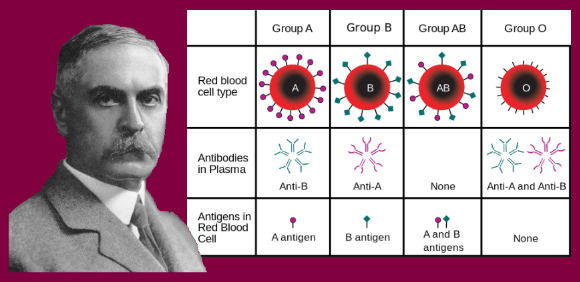In the Blood
On June 14, 1868, Austrian-American immunologist and serologist Dr. Karl Landsteiner was born. Early in his research of blood properties, he had concluded that agglutinin, a substance that causes particles to aggregate in a thickened mass, varied between blood types. He demonstrated how human blood could be typed by it properties of agglutination.
The Rockefeller Institute in New York engaged him and Landsteiner arrived in the United States in 1922 where he continued his research. Landsteiner continued to refine his work and illustrated how the properties of agglutination served as a diagnostic tool for detecting / identifying bacteria as well as to identify human blood types. This identification is essential for blood transfusion procedures. Landsteiner also advocated its use in forensic medicine and in the resolution of paternity questions.
A Nobel laureate for his discovery of human blood groups, Landsteiner continued his research with colleagues on Rh factors, eventually making the blood transfusion an even safer procedure.

The World Health Organization (WHO) honours Dr. Landsteiner’s birthdate as World Blood Donor Day to raise awareness of the need for safe blood and to thank blood donors for their life-saving gifts.
B Bondar / Real World Content Advantage